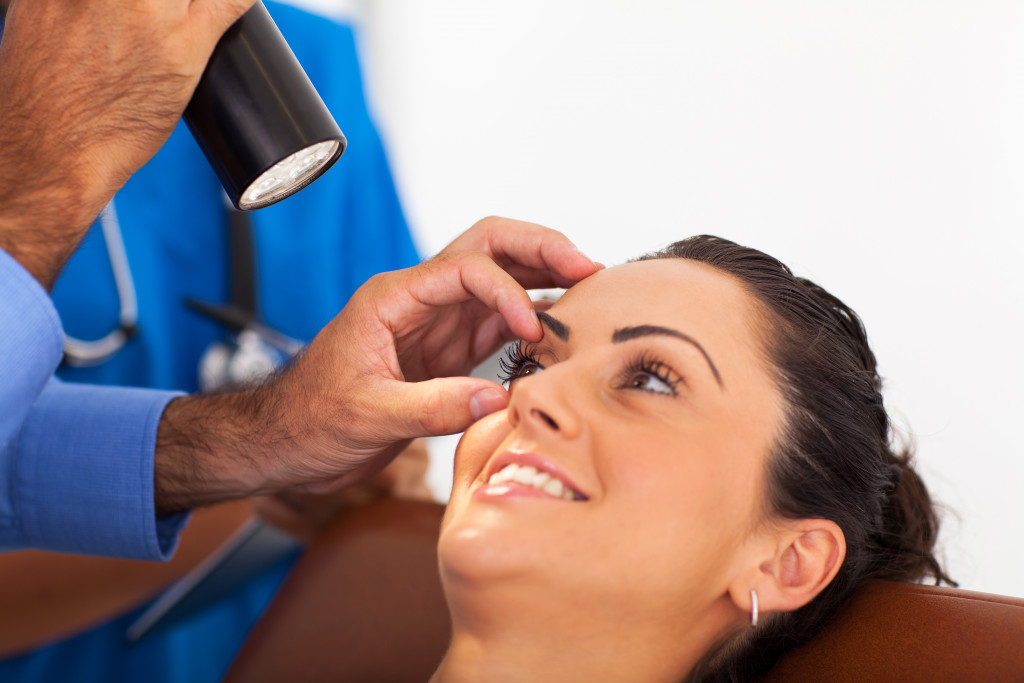Eye health problems can have a significant impact on quality of life. Some causes of eye problems are minor and can be easily treated, while others may require more serious medical intervention. In this article, we’ll discuss the different causes of eye health problems and their symptoms and treatments.
The importance of eye health
The eyes are one of the essential organs in the body, and it’s vital to take good care of them. Poor eye health can cause several problems, including vision loss, blindness, and even death. Poor eye health can also lead to other health problems, such as diabetes and heart disease. It’s therefore essential to take steps to protect your eyes and keep them healthy.
Different types of eye problems
Several different eye problems can occur, and their symptoms can vary depending on the specific condition. Some common eye problems include:
Astigmatism
Astigmatism is a condition in which the eye cannot focus properly, resulting in blurred vision. It’s usually caused by an abnormal shape of the cornea and can be treated with corrective lenses.
Cataracts
Cataracts are a condition in which the eye’s lens becomes cloudy, resulting in blurred vision and difficulty seeing in low light. It’s one of the most common causes of blindness and can usually be treated with surgery.
Diabetic retinopathy
Diabetic retinopathy is a complication of diabetes that can damage the blood vessels in the retina, leading to vision loss. It’s a severe condition that can be treated with laser surgery or injections.
Keratoconus
Keratoconus is a condition that affects the cornea, causing it to become thin and cone-shaped. This can cause problems with vision, and in severe cases, keratoconus may require surgery. Recently, a new treatment for keratoconus has been developed called corneal crosslinking. In this procedure, a photosensitive drug is injected into the cornea, and then ultraviolet light is used to activate it.
Glaucoma
Glaucoma is a condition in which the pressure in the eye becomes too high, damaging the optic nerve and leading to vision loss. It’s a severe condition that can be treated with medication or surgery.
Macular degeneration
Macular degeneration is when the macula, the part of the eye responsible for central vision, deteriorates, leading to vision loss. It’s a severe condition that medication or surgery can treat.
Retinal detachment
Retinal detachment is a condition in which the retina becomes detached from the back of the eye, resulting in vision loss. It’s a severe condition that can be treated with surgery.
Strabismus
Strabismus is a condition in which the eyes are not aligned properly, resulting in double vision. It can usually be corrected with surgery.
Conjunctivitis
Conjunctivitis is when the conjunctiva, the transparent membrane that covers the white part of the eye, becomes inflamed. It’s usually caused by an infection or allergy and can be treated with medication.
Dry eye
A dry eye is a condition in which the eye does not produce enough tears, resulting in discomfort and vision problems. It can be treated with artificial tears, eye drops, or surgery.
Eyelid twitching
Eyelid twitching is when the eyelid muscles contract involuntarily, causing the eyelid to twitch. It’s usually harmless, but can sometimes be a sign of a more severe problem.
Eye health tips

Here are some tips for keeping your eyes healthy:
1. Protect your eyes from the sun. UV radiation can damage the eyes and increase the risk of eye problems, such as cataracts and macular degeneration. Wear sunglasses that block UV radiation whenever you’re outdoors.
2. Get regular eye exams. Eye exams can help detect problems early before they cause vision loss. Talk to your doctor about how often you should have an eye exam.
3. Quit smoking. Smoking is a significant risk factor for several eye problems, including cataracts, macular degeneration, and diabetic retinopathy. If you smoke, quitting is the best thing you can do for your eye health.
4. Eat a healthy diet. Eating a diet rich in fruits and vegetables can help reduce the risk of developing some eye problems, such as cataracts and macular degeneration.
5. Exercise regularly. Exercise can help improve circulation and reduce the risk of developing eye problems, such as diabetic retinopathy.
6. Take breaks when using computers or other digital devices. Staring at a screen for long periods can cause eye fatigue and strain. To reduce your risk of developing eye problems, take breaks every 20 minutes and focus on something else for a few minutes.
7. Limit your alcohol consumption. Drinking too much alcohol can increase the risk of developing eye problems, such as cataracts and diabetic retinopathy.
8. Use eye protection when playing sports. Eye injuries are common in sports and can lead to vision loss. Wearing eyeglasses or goggles that protect your eyes can help reduce your risk of injury.
Conclusion
Eye health problems can have a significant impact on your quality of life. Some causes of eye problems are minor and can be easily treated, while others may require more serious medical intervention. By taking steps to protect your eyes and getting regular eye exams, you can help reduce your risk of developing serious eye problems.

